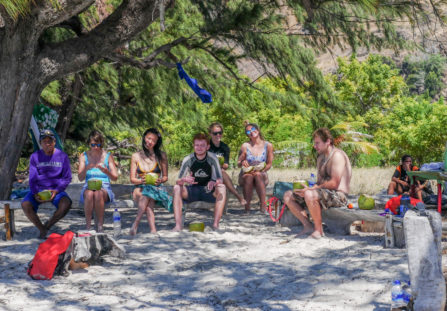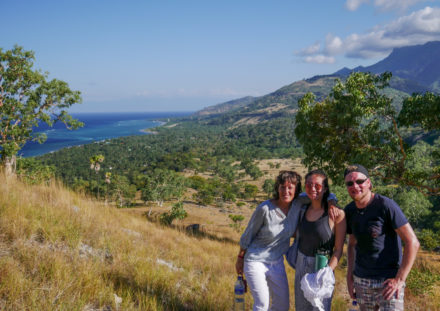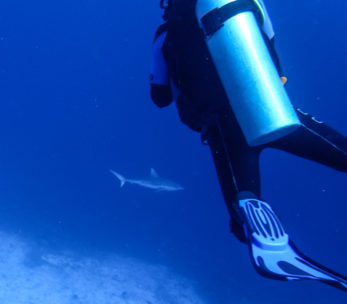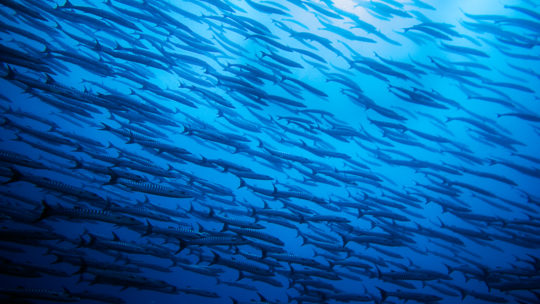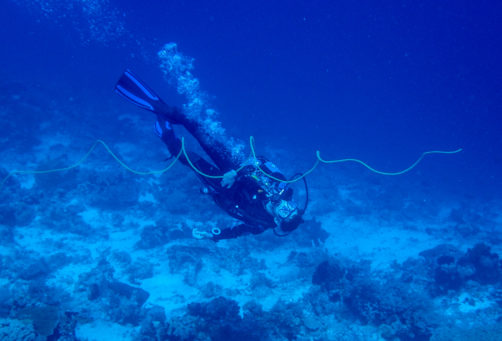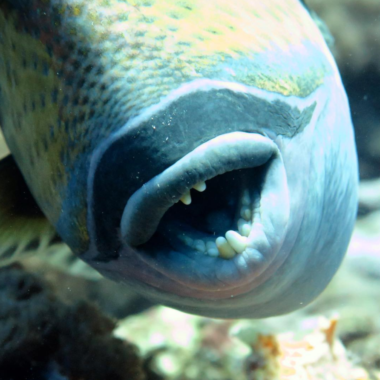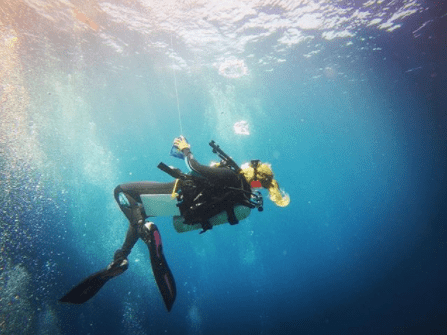I was one of nine volunteers on Blue Ventures’ 11th Expedition in Timor-Leste, and my initial concern when signing up was the other volunteers that I would be joining. Going to the opposite side of the world with a group of people I’d never met before was a bit of a frightening prospect…
In the end, I figured that if they were curious enough about the world to visit Timor-Leste, we must have something in common. And boy was I right! They are some of the kindest and most thoughtful people that I’ve ever met and that I’m now proud to call my friends.
Not only this, but Blue Ventures’ Field Scientist, Jenny House, and Dive Manager, Laura McGuire, are two people I would be happy to spend any amount of time on an island with. The Timorese staff members, Amos, Mima, Antonio and Armino, also did a great job helping us volunteers acclimatise to the culture, teaching us a bit of Tetun and taking care of us on our dives.
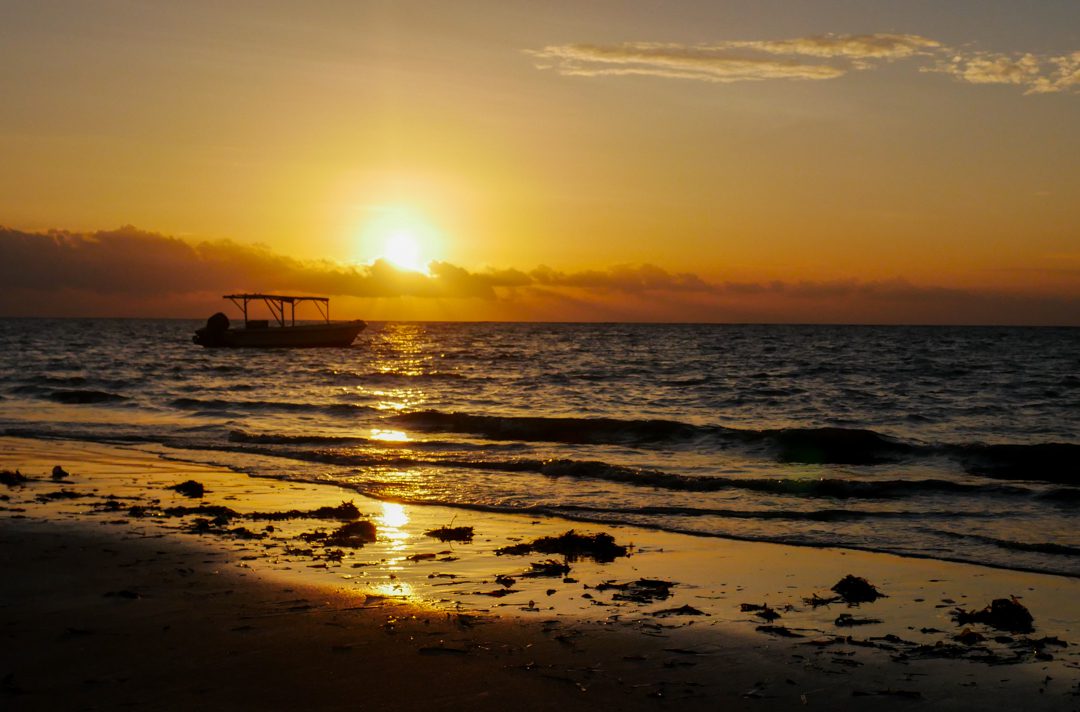
Sunset on Beloi beach | Photo Harrison Root
When on a Blue Ventures expedition, every day feels like an adventure. Waking up, essentially on the beach, scuba diving, learning more about marine biology and Timorese culture.
Throughout my six weeks on Ataúro Island, every dive was special in one way or another (even when just being the ‘body’ in a Rescue Diver course). That being said, there were two mornings that carried just a little more weight than the rest, so I’m going to describe them to you now in more detail.
Friday July 7, 2017
6:30 I wake up and have coffee and egg sandwiches with my homestay family.
7:00 I walk to Barry’s Place, where everyone set ups their tanks and dive gear in the “kit pit” as Jenny picks up takeaway lunches for us all from Leno’s (a local restaurant).
8:00 All aboard “Tasi Mos” (our dive boat), and full speed ahead to Akrema village on the north of Ataúro. Two big currents meet at this location, so Jenny thought it could well be a place of biological interest, and definitely worth an exploratory dive!

Antonio having his morning coffee next to Tasi Mos | Photo: Harrison Root
8:30 Everyone gear up, we’ve reached Akrema!
8:39 After rolling off Tasi Mos, we all descend. There are no expansive coral shelfs, or steep walls like at the reefs we’ve surveyed around Beloi village, but there is a strong current and we start drifting along the bottom at a depth of 17 metres.
8:40 Woah! A 2 metre (or so) Napoleon Wrasse appears in the distance.
8:50 Double woah! A 2 or 3 metre shark is approaching. It swims by before then circling back, it must be curious. On the second pass I got a really good look at it, the biggest shark I’ve ever seen, and I’m amazed at how calm I stayed. At first, and throughout the dive, I thought it was a reef shark…
9:00 Out of the blue approaches a large school of barracuda. As quickly as they arrive, they are gone. What will appear next?
9:10 Shark number 2! This one was further in the distance, so I didn’t get as good as look, but my fellow volunteer Chiara identified it as a black tip reef shark.
Interjection from Jenny: Some members of the group saw a third shark on this dive! Unbelievable!
9:18 We all ascend together, what a dive! Definitely the most exciting megafauna of the expedition so far.
9:30 Back on board Tasi Mos, Laura speculates that the first shark was a bull shark! Enthusiasm on the boat is sky high as we head for exploratory dive site number 2 near the village of Vatu on the west of Ataúro.
9:40 On arrival, Jenny and Mima swim to shore to confirm our eligibility to dive here. The community of Vatu have designated the area as a tara bandu, a community law for the regulation of the use of natural resources.
9:41 While we wait we practice our backflips off Tasi Mos!
10:00 Jenny and Mima return to the boat. Although the designation process is still ongoing, we are able to make a donation to support the community’s conservation efforts, and we have permission to be the first “tourists” to dive here since it was set aside for conservation 4 months ago.
10:20 Down we go! There’s slightly more coral here, and the water has slightly better visibility. At a depth of 15 metres, we begin to drift in the current, constantly scanning our surroundings so as not to miss anything that might swim by.
10:25 My fellow volunteer Sassa screams jubilantly gesturing to a hammerhead shark cruising along in the water column above.
10:33 With a heightened sense of awareness I’m now scanning both the reef and the open water, and spot a great barracuda, roughly 2 metres long, surveying the reef directly above me.
10:40 We pass by a magnificent gorgonian sea whip, and Carter, another volunteer, points out a large emperor angelfish taking refuge from the current under a tabular coral.
10:50 So many pyramid butterfly fish are congregating around a small coral atoll. We’ve found Butterfly World!
10:59 I spot an unidentified colonising object on a rock below. It’s black in color, has holes which resemble a tunicate, but is dripping (as melted cheese would) from one rock to another. Mima also hasn’t seen this particular organism before, and we signal that we’ll discuss it later on the boat (further research says it is most likely some sort of overgrowing tunicate).
11:12 Ascending to five metres for the standard 3 minute safety stop, we pass the time with a few disastrous attempts at blowing bubble rings.
Jenny’s honourable mentions: Also seen on this dive, a large tuna who came in for a close look, 5 or 6 titan triggerfish, and several sizeable groupers!

Dogtooth tuna | Photo: Jen Craighill
Saturday July 8, 2017
7:00 Saturday’s are usually reserved for more diving, however this Saturday is different. We’re going whale watching! Earlier in the week we had a lecture from Professor Karen Edyvane from Charles Darwin University about her research on cetaceans in Timor-Leste, and we were all buzzing to go and see some for ourselves.
8:00 Tasi Mos leaves the shelter of the inner lagoon, heading towards the open ocean where chances of seeing cetaceans are higher. The sun is shining, the sea is mostly calm, and everyone’s eyes are glued to the horizon, scanning for any signs of mammalian activity.
9:30 No sightings yet… We’re on the opposite side of the island, and Jenny is thinking it’s time to start heading for home. She asks Antonio if it’s time to turn around but he suggests we do a lap of the Island, seeing as we have the fuel. Jenny agrees, she wants to see a cetacean as badly as the rest of us.
9:40
9:41 Everyone get your snorkelling equipment on!!
9:42 Where’s the whale?
9:43 Where’s the whale?
9:44 Where’s the whale?!
9:45 Over there!!!!! There’s two!!!!
9:46 In the water, quickly!!! They’re swimming towards us.
9:47 Wow!!!
Over the next 30 minutes they swam directly below us once more and surfaced within sight of the boat several times.
10:22 The pair haven’t surfaced in some time, it’s time to return to Beloi, identify the species, and bask in the eternal glory of a successful adventure.
Jenny’s Notes: They were pygmy blue whales! This is a subspecies of the blue whale which only grows to 24 metres rather than 28 metres long. Still absolutely huge though!
Watch volunteer Carter Spurling’s video from Expedition 11 in Timor-Leste:
Join us for a marine conservation expedition on Ataúro Island.
Blue Ventures would like to thank our supporters and funders including the Darwin Initiative through UK Government funding, the GEF through UNEP under the Dugong and Seagrass Project, and Wilstar.




